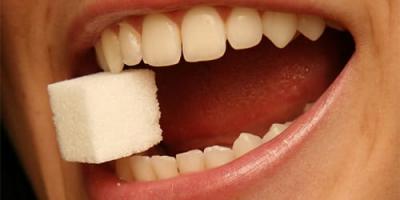Question to a specialist
A bellows axial compensator (ABC) is a flexible element used primarily to compensate for water hammer and thermal axial deformation of pipelines for any installation method. Feature of this device is the design; The compensator is made of one or more flexible corrugations (bellows) made of high-quality of stainless steel. Components are produced by cold rolling, which, unlike the hydraulic method, provides the product with special reliability and durability. Due to temperature changes, the straight section of the pipeline receives a slight increase in length, as a result of which other deformations occur that can quickly damage even new pipes. The compressor corrugations are flexibly deformed and absorb changes in the length of the section, depending on the compensating ability of the device.
Installation of bellows axial expansion joints is carried out using various working fittings. The equipment is connected by joining threaded fragments, welding pipes or flanges. Design features consist in the manufacture of compensators with a protective casing, an internal screen and a stroke limiter, depending on the general technical characteristics of the equipment and the compensating capacity required for them. Before being delivered to the market, modern bellows expansion joints undergo strict control to ensure compliance with high standards, undergoing destructive and hydraulic tests.
Mandatory parameters for selecting a bellows axial compensator:
- The magnitude of the working stroke (millimeters, angular degrees).
- Nominal internal diameter.
- Maximum permissible load pressure.
- Design features and type of installation.
- Material of the product.
- Working temperature pipeline or heating network.
Bellows expansion joints are used in construction and industry, and can also serve as components for tanks, motors and pumps in production. They are convenient for installation and maintenance work, can withstand the maximum operating pressure to which the pipeline is exposed, are reliable and easy to maintain.
The Engineering Company "Kronstadt" is the official distributor of Duro Dakovic expansion joints in Russia. Our specialists will help you select a standard bellows axial expansion joint, or order its development on an individual request in accordance with the special technical characteristics of the equipment.
The issue of ensuring safety when transporting various media is very important. That is why we will talk about the use of bellows expansion joints as one of the ways to ensure the reliability and long-term operation of communication systems.
When transporting liquids or gases, pipeline sections are constantly exposed to external negative factors, which include expansion and contraction due to temperature changes, mechanical waves, changes in the parameters of the pumped substance and stress due to subsidence of the foundation. In order to reduce the likelihood of deformation and increase the duration of the service life, bellows-type compensators are used, which reduce Various types loads.
The material for the manufacture of bellows expansion joints is stainless steel, which can remain operational in a high range of temperatures and pressures. This explains the high reliability of compensating devices of this type in protecting communications from the negative consequences of water hammer, stretching, kinks and other deformations.
Stuffing box expansion joints are axial sliding devices that compensate for disturbances using a telescopic pipe or compression of spring inserts.

Compensating devices are used:

Devices and types
The design of the compensating device consists of a bellows and fittings. A bellows is a thin-walled pipe made of stainless steel or composites in the form of a corrugation. The number and thickness of corrugations, which affect the strength characteristics, are determined based on the pumped medium and operating parameters.
Pipe movement can be angular, linear or shear. The casing is adjacent to connecting elements in the form of special tubes to protect the structure.
The fittings differ in design; the choice of a specific one depends on the type of object and the functions performed. Based on the type of connecting fittings, bellows-type compensating devices are distinguished into those connected by a flange and by welding. Hinges and other movable structures are components of reinforcement.

In most cases, the fittings are made of brass, bronze or stainless steel. Bellows-type compensators make it possible to create connections that will not allow either liquid or gas to pass through, even under constant loads. When there is a difference in temperature and pressure, the device undergoes some contraction or expansion. Refusal to use compensators significantly reduces the service life of communications. The main parameters of compensators are their dimensions, shape and maximum pressure.

Based on the type of deformation, compensating devices are divided into:
- with internal screen or protective casing
- by grade of stainless steel used to make the bellows;
- according to the grade of stainless steel used for the manufacture of the cardan, hinge, tie rod;
- with flanged, threaded and welded connection to the pipe;
Based on their design, these devices are divided into:
- by nominal diameter;
- by working pressure;
- according to temperature conditions;
- according to the transported medium: water, steam, for petroleum products, for aggressive substances.
Where are compensators used? Their advantages.
Bellows-type compensating devices are widely used in various fields. These include:
- heating systems for houses and industrial areas;
- oil and gas industry enterprises;
- military-industrial complex objects
- chemical, energy and food production;
- automotive industry facilities;
- factories for the production of cryogenic equipment.
The advantages of these devices include:
- high reliability;
- durability;
- ease of maintenance and installation;
- small sizes;
- various configurations
- Possibility of manufacturing according to personal order.

Designation of bellows type compensators.
Let's consider this using the example of the following bellows compensator, designated: 1КСОФр.K3 150-15-100-10-10.

The first number 1 indicates the number of sections of the device. KSO designates the type of compensator, in this case: axial bellows-type compensator. Fp speaks of a flange plus pipe connection. The same letter, but without the lowercase sign, indicates a flange connection only. The letter K means the presence of a protective casing in the design, and the letter Z means an internal screen. The number 150 helps to establish the nominal diameter of the device, and 15 helps to understand the conditional operating pressure. Next comes a series of three numbers indicating the compensating ability. The first number shows axial, the second shear, the third angular. Thus, the device has the following compensating characteristics: 110, 12, 12 millimeters, respectively.
The price of bellows-type expansion joints ranges from 150 to 600 rubles, which makes them attractive to the buyer. other types are much more expensive.

Installation and Assembly Requirements
These requirements include the following:
- bellows-type expansion joints should be assembled simultaneously with the assembly of the entire pipeline;
- installation dimensions should be observed according to the parameters in the drawings;
- An arrow is placed on the device body, the direction of which should indicate the direction of movement of the pumped medium.
- it is necessary to exclude any loads during assembly.
The connection of the compensating device can be carried out using, or using welding.
So, this article covered everything you need to know about bellows expansion joints. The main conclusion from all of the above is the following: compensating devices must be used without fail during the construction of pipelines in order to ensure reliability and a longer period of operation.
The sections of the pipeline before and after the compensator must be mounted and secured in fixed supports OH-1 and OH-2 so that the distance between the ends of the pipes at the location where the compensator is installed corresponds to the length of the compensator in the delivery state L;
- next, you should bring the compensator to the joints, ensuring the alignment of the connecting pipes of the compensator and the ends of the pipeline;
- weld the joints.
Compensators can be installed on both horizontal and vertical sections of pipelines. The insertion of the compensator into the heat pipelines should be done in the places specified in the design technical documentation. It is not allowed to load the bellows axial compensator KSO with the weight of the connected sections of pipes, machines and mechanisms. Installation of compensators is allowed at air temperatures not lower than minus 10°C. Installation and welding work at outside temperatures below minus 10°C must be carried out in special rooms in which the air temperature in the welding zone must be maintained not lower than the specified one. Compensators should be transported to the installation site in the original packaging, excluding the possibility of mechanical damage. It is prohibited to store unpacked and unpreserved expansion joints in open areas. Before installation, compensators must be checked to ensure that their technical characteristics comply with the design of the heating network, as well as for the absence of nicks and other damage to the casing and connecting pipes. When installing compensators, torsional and bending loads relative to the longitudinal axis of the product should be avoided. When performing welding work protection measures must be taken compensator against splashes of molten metal.
Before installing thermal and waterproofing, it is necessary to perform the following work: clean the surface of the welding seams from dirt, rust, scale; dry with a gas burner; apply an anti-corrosion coating to the joint, in accordance with the standard instructions for protecting heating network pipelines from external corrosion RD 153-34.0-20.518-2003 .If leakage of the compensator is detected during testing, it is dismantled and replaced with a new one, about which a report is drawn up. If after hydraulic tests it is established that the length of the compensator has increased by more than 15% compared to the length during installation, which indicates a displacement of the fixed supports, it is necessary carry out an audit supporting structures, and replace the compensator with a new one.
After applying an anti-corrosion coating to the welded seams of the pipes, thermal insulation is applied to the compensator. In this case, it is necessary to exclude the possibility of ground or surface water entering under protective cover. Thermal insulation should not prevent the free movement of the movable part of the compensator relative to the outer protective casing. Filling the space between the bellows corrugations with insulating or other materials is not allowed. Work on waterproofing the joints must be carried out in accordance with recommendations and instructions factories that produce heat pipes, depending on the design of the heat-insulating coating and the type of installation (duct, above-ground, in tunnels, indoors).
The installation of the alarm system is carried out according to a special project, in full accordance with the manufacturer’s instructions. At least two indicator conductors should be installed in the thermal insulation of axial bellows expansion joints. The ends of which must protrude on both sides by at least 100 mm for ease of connection with the general signal pipeline system. The connection of the indicator conductors of axial compensators with the general signaling system must be made after completion of welding work, before starting work on insulating the joints of the nozzles with the heat pipeline. The conductor should not touch the metal surface anywhere. After documenting the connection of the indicator conductors of the general signal system and checking that their resistance corresponds to the factory data, the joints should be insulated.
Pipelines with compensators installed in them must be subject to preliminary and final testing for strength and tightness. When testing a pipeline on which a KSO compensator is installed, it is necessary to comply with the building codes and regulations of the Russian Federation SNiP 41-02-2003, “Rules for the design and safety of operation of steam and hot water"(PB 10-573-03), "Safety rules for the operation of thermal mechanical equipment of power plants and heating networks" (RD 34.03.201-97). Before completing installation, as well as during work, you should make sure that inner surface pipes and expansion joint are dry, clean and free from foreign bodies. After installation is completed, the system should be flushed with water in accordance with the requirements of SNiP 3.05.03-85 “Heat networks”.
Hydraulic (pneumatic) tests for strength and density steel pipes and compensator KSO are manufactured in accordance with SNiP 41-02-2003 “Heat networks”. Preliminary tests are usually performed hydraulically. For hydraulic testing, water with a temperature not higher than +40C and not lower than +5C is used. The outside air temperature must be positive, each tested area is hermetically sealed on both sides with plugs. Use for these purposes shut-off valves not allowed.
Final tests are carried out after completion of all construction and installation work. If the heating pipelines are not immediately put into operation, then the system as a whole is recommended to be mothballed.
A rupture of the compensator bellows may occur as a result of incorrect calculations in the design documentation or violations of operating and installation rules. In the event of failure of the compensator to operate during the warranty period, the consumer must draw up a technically justified report on the malfunction and the routine maintenance performed.
- TU VRSHE.302667.006TU;
- Certificate and declaration TR CU 32/2013;
- Certificate GOST R
- License for the manufacture of equipment for structures, complexes, installations with nuclear materials intended for the production, processing, transportation of nuclear fuel and nuclear materials
- License for designing equipment for nuclear installations.
- PED (audit by TÜV Rheinland, Germany)
- ISO9001:2008 (audit by TÜV Rheinland, Germany).
Materials for manufacturing
Bellows: stainless steel, corrosion-resistant, heat-resistant, 08Х18Н10Т (AISI321), 08Х18Н10 (AISI304), 03Х18Н11 (AISI304L), 03Х17Н14M3 (AISI316L). Structural cryogenic steel, 12Х18Н10Т (AISI321).End fittings: high-quality structural carbon steel, grades 20, 35. Stainless steel, corrosion-resistant, heat-resistant, 08Х18Н10Т (AISI321), 08Х18Н10 (AISI304), 03Х18Н11 (AISI304L), 03Х17Н14M3 (AISI316L). Structural cryogenic steel, 12Х18Н10Т (AISI321) or their analogues. Low-alloy structural steel for welded structures, 09G2S, 17GS.
Other items: High-quality structural carbon steel, grades 20, 35. Stainless steel, corrosion-resistant, heat-resistant, 08Х18Н10Т (AISI321), 08Х18Н10 (AISI304), 03Х18Н11 (AISI304L), 03Х17Н14M3 (AISI316L). Structural cryogenic steel, 12Х18Н10Т (321 or their analogues. Low-alloy structural steel for welded structures, 09G2S, 17GS.








